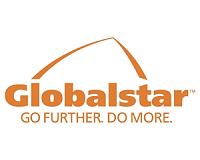 |
Paris, France (SPX) Oct 12, 2010 Arianespace has organized a meeting of all European manufacturers involved in the Ariane 5, Soyuz and Vega programs at its company headquarters in Evry, near Paris. The annual meeting organized by Arianespace brings together all European manufacturers of launch systems, including both launch vehicles and facilities. Participants reviewed the events of the previous year, and jointly defined directions and objectives for 2011, when the three launchers in the family will all be in operation from the Guiana Space Center (CSG). A family of three launchers Ariane 5, the heavy lifterWith 38 successful launches in a row and over seven years without a failure, Ariane 5 continues to confirm, launch after launch, its technical and operational maturity. Arianespace guarantees reliable, available launch services for all customers, based on: + A qualified launcher, always used in the same two basic versions: Ariane 5 ECA for GTO (geostationary transfer orbit) missions, and Ariane 5 ES for low and medium orbit missions. + A simplified organization, in which European industry manufactures the launcher and Arianespace is responsible for launches, contracts and satellite positioning. + A continuously improved launcher, offering GTO payload capacity for dual launches of 9,200 kg at year-end 2010, and 9,500 kg at year-end 2011. Soyuz, the medium launcherThe first launch of Soyuz from the Guiana Space Center is scheduled for April 2011. Arianespace's customers have expressed their confidence in this new system by signing 18 launch contracts to date. Arianespace has therefore ordered 24 launchers from Russian industry, with the first two already delivered to CSG. The Soyuz launch complex (ELS) will be handed over to Arianespace by the end of 2010 and, following the inaugural launch in April 2011, two more Soyuz launches are scheduled by the end of that year. Furthermore, since 1999, Starsem, the European-Russian subsidiary of Arianespace, has operated Soyuz from the Baikonur Cosmodrome in Kazakhstan. It has carried out 21 commercial launches to date, all successful, with the next launch planned on October 19. Vega, the light launcherThe new Vega launch system offers payload capacity of 1,500 kg to an orbit of about 700 km, and will primarily be used for scientific and Earth observation satellites. Purpose-designed to meet demand from Arianespace's customers, and ideally suited for the launch of small satellites into low or Sun-synchronous orbits, Vega aims to quickly establish itself as the best launcher in its class. Arianespace signed the Verta framework contract in September, covering the five Vega launches after the qualification flight. The Vega launch pad will be handed over by the end of the year, and the first launch is slated for 2011.
2011: a year of challenges + Adapt the ground support systems and facilities to three different launch systems. + Foster synergies between these systems in order to reduce costs. + Deploy the teams, resources and installations needed to keep pace with a growing launch manifest. The expanded European launcher family of Ariane 5, Soyuz and Vega will give Arianespace the enhanced agility needed to meet the evolving requirements of its broad customer base, including both government and commercial operators.
Share This Article With Planet Earth
Related Links ArianeSpace Launch Pad at Space-Travel.com
 Integration Of Six Globalstar Satellites Is Complete
Integration Of Six Globalstar Satellites Is CompleteParis, France (SPX) Oct 04, 2010 All six Globalstar satellites for the upcoming Soyuz flight from Baikonur Cosmodrome have been integrated on their dispenser system, marking a new milestone in this key mission to be performed October 19 for Arianespace by its Starsem affiliate. The second-generation Globalstar spacecraft were installed in sequence on the two segments of this 6.7-meter-high conical-shaped dispenser, which ... read more |
|
| The content herein, unless otherwise known to be public domain, are Copyright 1995-2010 - SpaceDaily. AFP and UPI Wire Stories are copyright Agence France-Presse and United Press International. ESA Portal Reports are copyright European Space Agency. All NASA sourced material is public domain. Additional copyrights may apply in whole or part to other bona fide parties. Advertising does not imply endorsement,agreement or approval of any opinions, statements or information provided by SpaceDaily on any Web page published or hosted by SpaceDaily. Privacy Statement |